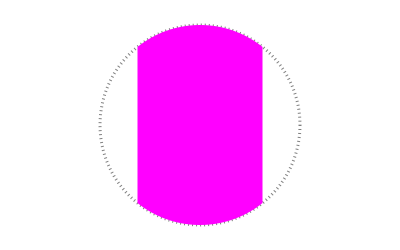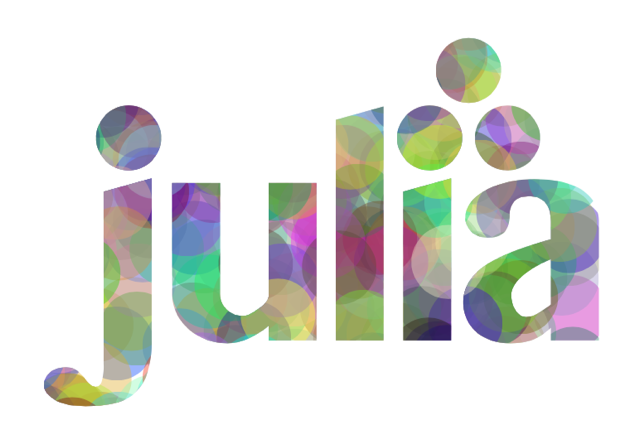Clipping
There's two types of clipping in Luxor: polygon clipping and visual clipping.
Polygon clipping
Use polyclip to clip one polygon by another. The clipping polygon must be convex (every interior angle is less than or equal to 180°).
s = hypotrochoid(160, 48, 88, vertices=true)
setline(0.5)
sethue("grey60")
poly(s, :stroke)
c = box(O, 260, 250)
poly(c, :stroke, close=true)
sethue("gold")
setline(2)
poly(polyclip(s, c), :stroke, close=true)Visual clipping
Use clip to turn the current path into a clipping region, masking any graphics outside the path. clippreserve keeps the current path, but also uses it as a clipping region. clipreset resets it. :clip is also an action for drawing functions like circle.
sethue("grey50")
setdash("dotted")
circle(O, 100, :stroke)
circle(O, 100, :clip)
sethue("magenta")
box(O, 125, 200, :fill)
This example uses the built-in function that draws the Julia logo. The clip action lets you use the shapes as a mask for clipping subsequent graphics, which in this example are randomly-colored circles:

function draw(x, y)
foregroundcolors = Colors.diverging_palette(rand(0:360), rand(0:360), 200, s = 0.99, b=0.8)
gsave()
translate(x-100, y)
julialogo(action=:clip)
for i in 1:500
sethue(foregroundcolors[rand(1:end)])
circle(rand(-50:350), rand(0:300), 15, :fill)
end
grestore()
end
currentwidth = 500 # pts
currentheight = 500 # pts
Drawing(currentwidth, currentheight, "clipping-tests.pdf")
origin()
background("white")
setopacity(.4)
draw(0, 0)
finish()
preview()